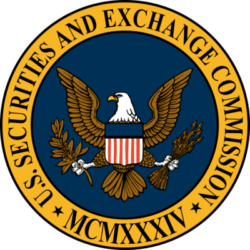The Office of Investor Education and Advocacy of the United States Securities and Exchange Commission issued an Investor Bulletin to educate investors about Exchange Trade Notes
According to the SEC, Exchange Trade Notes are unsecured debt obligations of financial institutions that trade on a securities exchange. Exchange Trade Notes payment terms are linked to the performance of a reference index or benchmark, representing the Exchange Trade Notes’s investment objective. You should understand that Exchange Trade Notes are complex and involve many risks for interested investors, and can result in the loss of your entire investment.
What is an Exchange Trade Notes?
Exchange Trade Notes are unsecured debt obligations of financial institutions. They are very different from traditional corporate bonds because, unlike traditional corporate bonds – which pay a stated rate of interest – the return on an Exchange Trade Notes is based on the performance of a reference index or benchmark (minus any investor fees you may pay). Exchange Trade Notes generally do not pay interest to their holders. Payments on Exchange Trade Notes may be linked to well-known broad based securities indexes or based on indexes tied to emerging markets, commodities, volatility, a specific industry sector (e.g. oil and gas pipelines), foreign currencies, or other assets. Exchange Trade Notes that offer leveraged exposure pay a multiple of the performance of the reference index or benchmark. Other Exchange Trade Notes (called inverse Exchange Trade Notes) are calculated based on the opposite of the performance of the reference index or benchmark. Many Exchange Trade Notes are issued with maturities of 20 or 30 years, and are not intended to be held to maturity. Accordingly, returns to an investor generally arise from trading the Exchange Trade Notes rather than from holding the Exchange Trade Notes to maturity.
What is the Difference Between an Exchange Trade Notes and an ETF?
Exchange Trade Notes are often confused with exchange-traded funds (ETFs). Exchange Trade Notes and ETFs are both traded on a securities exchange and can be bought and sold throughout the day, but there are important differences. ETFs are registered investment companies. An investor in an ETF owns shares of a fund, which represents an ownership interest in an underlying portfolio of assets. An ETF discloses to investors the value of its portfolio of assets by publishing an end-of-day net asset value and by disseminating an estimate of its value generally every 15 seconds during the trading day, which is sometimes called an intraday indicative value. An ETF issues and redeems its shares in creation units, at their net asset value.
Exchange Trade Notes share some characteristics with ETFs. For example, Exchange Trade Notes also issue and redeem notes in creation unit sizes (generally, 25,000 to 50,000 notes); like with ETFs, the creation and redemption process affects the number of notes trading at any point in time. For both Exchange Trade Notes and ETFs, the purchasers of the creation units split them up to sell the individual notes or shares, as applicable, to investors in transactions on an exchange. But there is a fundamental difference between ETFs and Exchange Trade Notes. Unlike ETFs, Exchange Trade Notes do not own an underlying portfolio of assets and this makes holders of Exchange Trade Notes subject to the creditworthiness of the issuer. As Exchange Trade Notes do not own assets, when issuing new Exchange Trade Notes, Exchange Trade Notes issuers calculate the value of the Exchange Trade Notes using a described formula, rather than using net asset value.
Market Trading and Valuing Exchange Trade Notes
Exchange Trade Notes are listed on an exchange and may be bought and sold at market prices. An Exchange Trade Notes’s prospectus will describe both how the value of the note is determined on any particular trading day, as well as how the value of the reference index or benchmark is calculated. Issuers publish a value at the conclusion of each trading day representing the amount an issuer would be obligated to pay the investor. Market prices may vary from these published values.
Potential Risks to Consider Before Investing in Exchange Trade Notes
Potential risks of investing in Exchange Trade Notes include the following:
Complexity – You and your broker should take time to understand the manner in which the reference index or benchmark is calculated, including the fees that are included in either the reference index or the calculation of the value of the Exchange Trade Notes. Compare and contrast the Exchange Trade Notes to other investment products offering a similar investment strategy.
Credit Risk (Issuer Default) – You should be aware that when you purchase an Exchange Trade Notes you are subject to the creditworthiness of the issuing financial institution and would be a creditor if the issuer defaults on payments due.
Market Risk – In addition to the credit risk of the issuer, Exchange Trade Notes also expose investors to the performance risk of the reference index or benchmark.
Leverage – Leveraged, inverse, or inverse-leveraged Exchange Trade Notes reset on a daily basis their exposure to the leveraged, inverse, or inverse-leveraged exposure stated in the prospectus, meaning that all investors receive an equal amount of leveraged, inverse, or inverse-leveraged exposure. As a result, investors holding such Exchange Trade Notes for more than one day should not expect to receive returns proportional to the exposure stated in the prospectus. The difference can be significant. Consequently, leveraged, inverse, or inverse-leveraged Exchange Trade Notes are not typically used as buy-and-hold instruments.
Price Volatility (Market Price versus Indicative Value) – Exchange Trade Notes can trade at premiums or discounts to their indicative value, especially in instances in which the issuer has suspended further note issuances. If you are considering purchasing Exchange Trade Notes, you should compare market prices against indicative values.
Liquidity Risk – There is a risk that if you need to cash out your investment, you may not be able to sell the Exchange Trade Notes immediately and at a price that you would consider reasonable (for example, you may have to sell the Exchange Trade Notes at a lower price than if you were able to wait to liquidate your investment). This is the case for most illiquid securities and the liquidity of Exchange Trade Notes varies significantly. For example, some Exchange Trade Notes have daily volume in excess of a million notes, while others may have little trading activity over several days. You should consider your overall timeframe for the investment, including how quickly you may need to sell the Exchange Trade Notes.
Additional Considerations:
Do not invest in something that you do not understand. Before purchasing an Exchange Trade Notes, you should consider:
- Whether Exchange Trade Notes are a suitable investment for you. You should review your investment objectives and tolerance for risk with your broker or financial adviser before you consider investing in an Exchange Trade Notes. They can help you determine whether or not the risks associated with a particular Exchange Trade Notes are within your tolerance for risk, or whether your investment needs are better served by investing in another product. Your broker should only recommend transactions and investment strategies that are suitable for you based on your investment profile.
- What fees are associated with an Exchange Trade Notes, such as fees included in the reference index or benchmark, daily investor fees that reduce the closing indicative value of the Exchange Trade Notes, and the amount of brokerage commissions you may pay when buying and selling an Exchange Trade Notes.
- Whether you understand how the reference index or benchmark is calculated.
- Whether you understand how the indicative values and redemption values are calculated and what they measure.
- Whether you understand the tax implications, if any, because the tax treatment can vary depending upon the nature of the Exchange Trade Notes. It may be appropriate to consult a tax professional.
- Finally, you may wish to consider seeking the advice of an investment professional. If you do, be sure to work with someone who understands your investment objectives and tolerance for risk. Your investment professional should understand complex products, such as Exchange Trade Notes, and be able to explain to your satisfaction whether or how they fit with your objectives.








